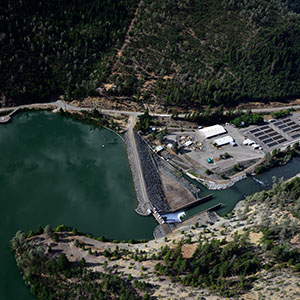First People:
Native tribes such as the Nor Rel Muk Wintu, Chimariko, Hoopa Valley, Karuk and Yurok have lived along the Trinity and Klamath rivers and their tributaries for thousands of years.
Deep cultural and spiritual connection to the land, water, and natural resources have always been essential to these tribal communities, resulting in thousands of years of conservation practices that balanced human and environmental needs. Native people have historically maintained healthy fisheries and forests through mindful harvesting and fire management.
To this day, natural resources including wild salmon and lamprey, are deeply embedded in the culture and spirituality of tribal communities in the Trinity and Klamath River basins.
Gold Mining:
In 1848, gold was discovered in the Trinity River near Douglas City, which sparked roughly 100 years of mining in Trinity County. The primary type of mining was placer mining; sifting through loose, sedimentary deposits to unearth ore previously eroded by wind, water, or ice. This large-scale industrial mining washed entire hillsides into the river, and turned the river inside out and upside down, devastating the ecology of the Trinity River. Evidence of this extensive mining history is still visible across the Trinity River watershed. Most notable are the widespread piles of mine tailings, river rocks and unwanted sediments, that were pulled from the river and deposited floodplains. There are still active gold claims within the watershed but they are much smaller.



Dams and Water Diversions:
Approved by Congress in 1955, Trinity and Lewiston Dams were completed in 1962 and 1963 respectively, as part of the Central Valley Project’s Trinity River Diversion. The main objective of this project was to divert flows from the Trinity River to the Central Valley for agriculture and municipal uses. Historically, as much as 90% of water flowing into Trinity Lake was diverted to the Sacramento-San Joaquin Valley. Before any dams were built on the Trinity River, natural instantaneous streamflow in Lewiston ranged from as low as 30 cubic feet per second (cfs) to as high as 70,000 cfs. These flows created a dynamic river system that fish and wildlife need to thrive. When the dams on the Trinity River were complete in the early 1960s, river flows were held between 150 and 300 cfs year-round.
1. The Central Valley Project includes a total 18 dams, combined storage capacity of over 11 million acre-feet, 11 power plants, and 3 fish hatcheries, including the Trinity River Hatchery in Lewiston. Trinity Lake, created by Trinity Dam, has a storage capacity of 2,448,000 acre-feet.
2. On average from 2001 – 2019, approximately 50% of the water inflow to Trinity Lake was diverted to the Central Valley Project and 50% to the Trinity River.
3. The dams on the Trinity River effectively cut off 25% of the overall watershed, and removed 109 miles of dynamic river habitat.
4. Dams block water and sediment from travelling downstream. Decreased streamflow and sediment in the Trinity River has resulted in a loss of stream habitat and irregular water temperatures.




